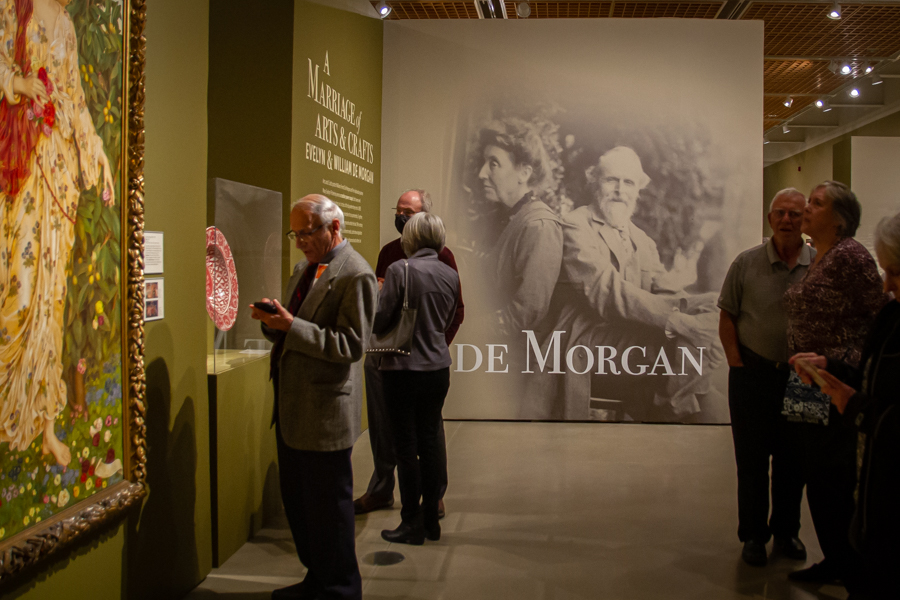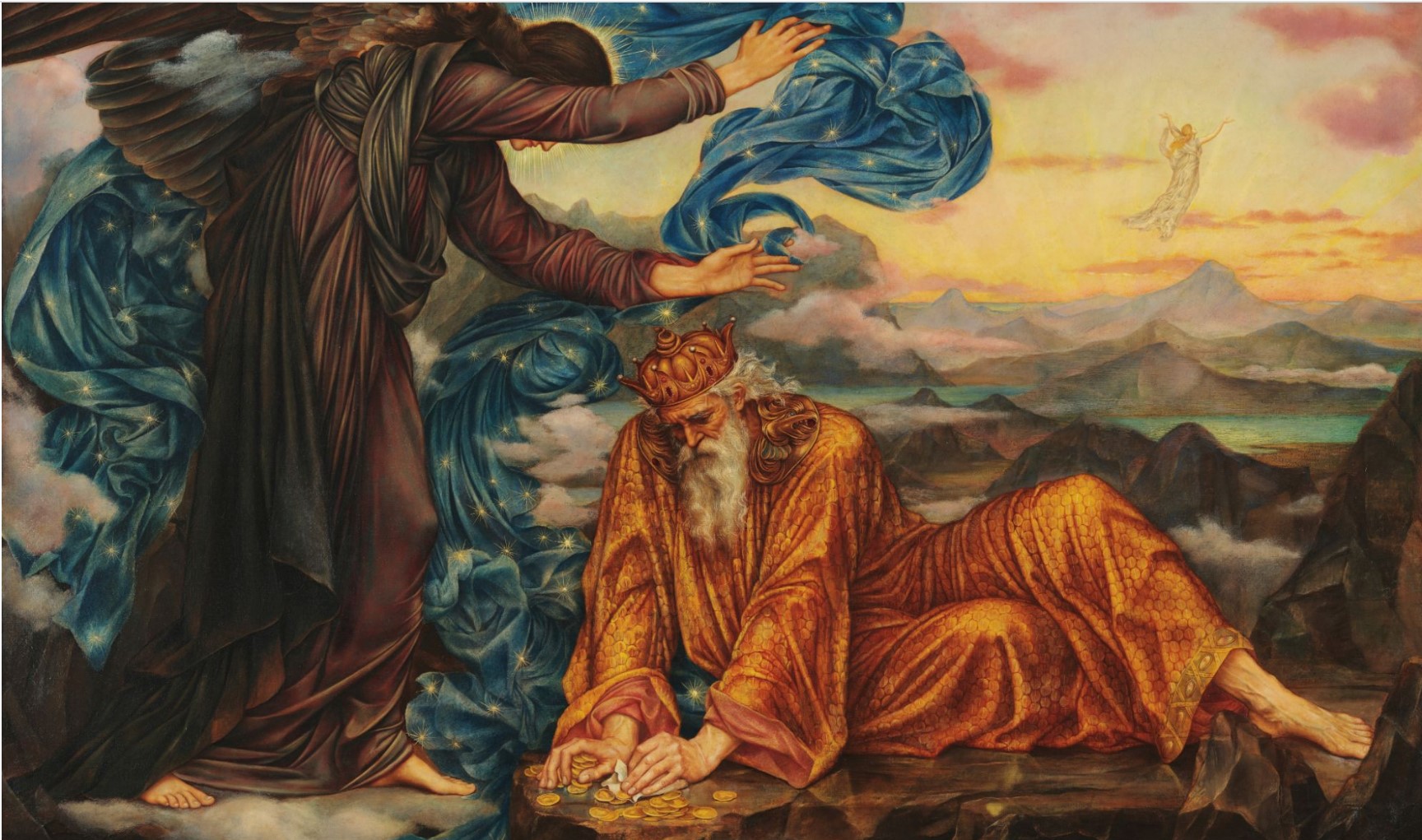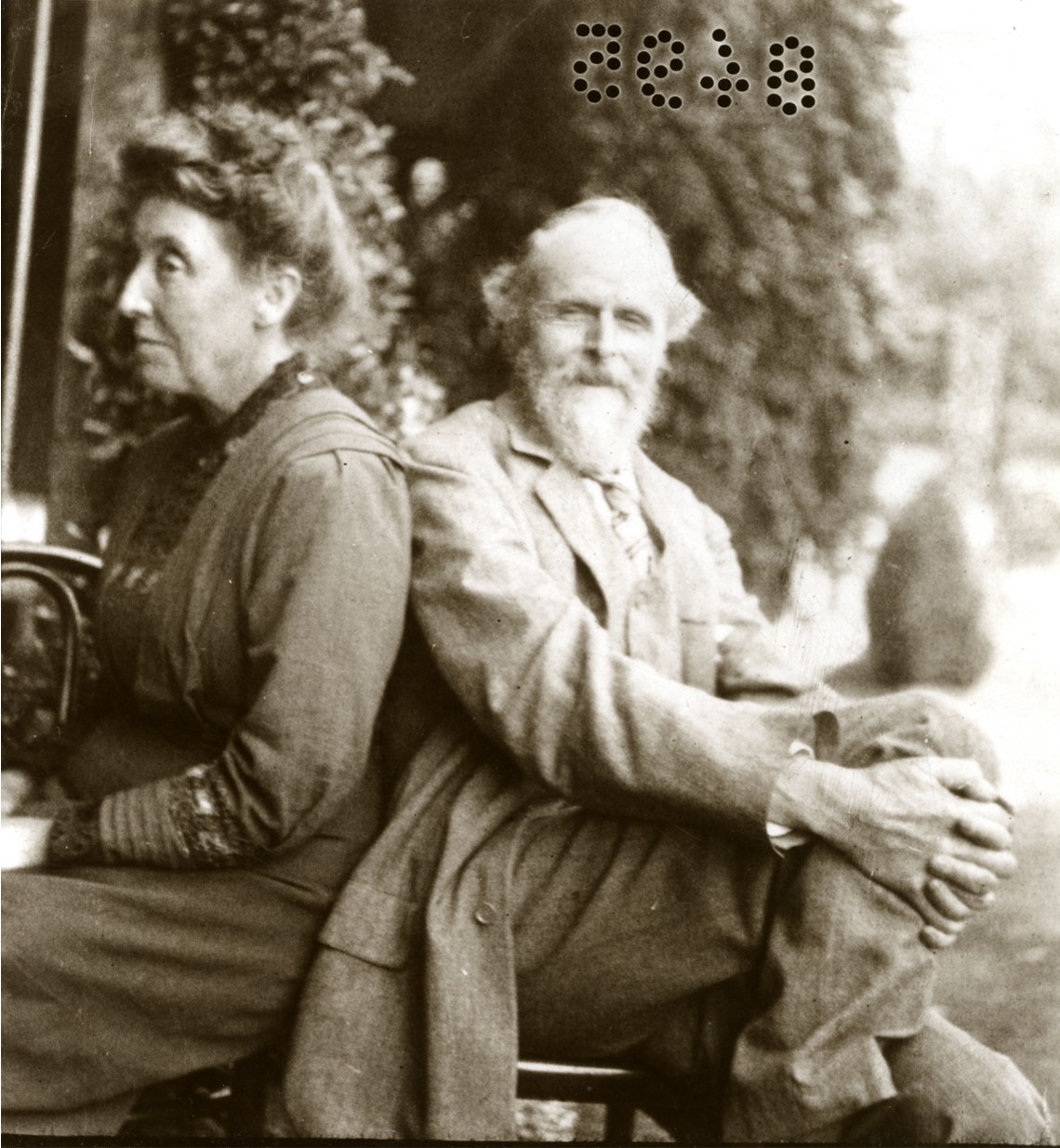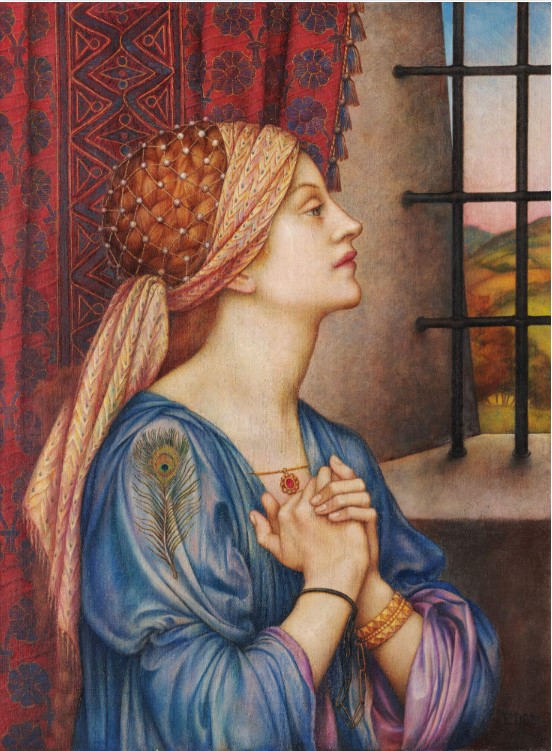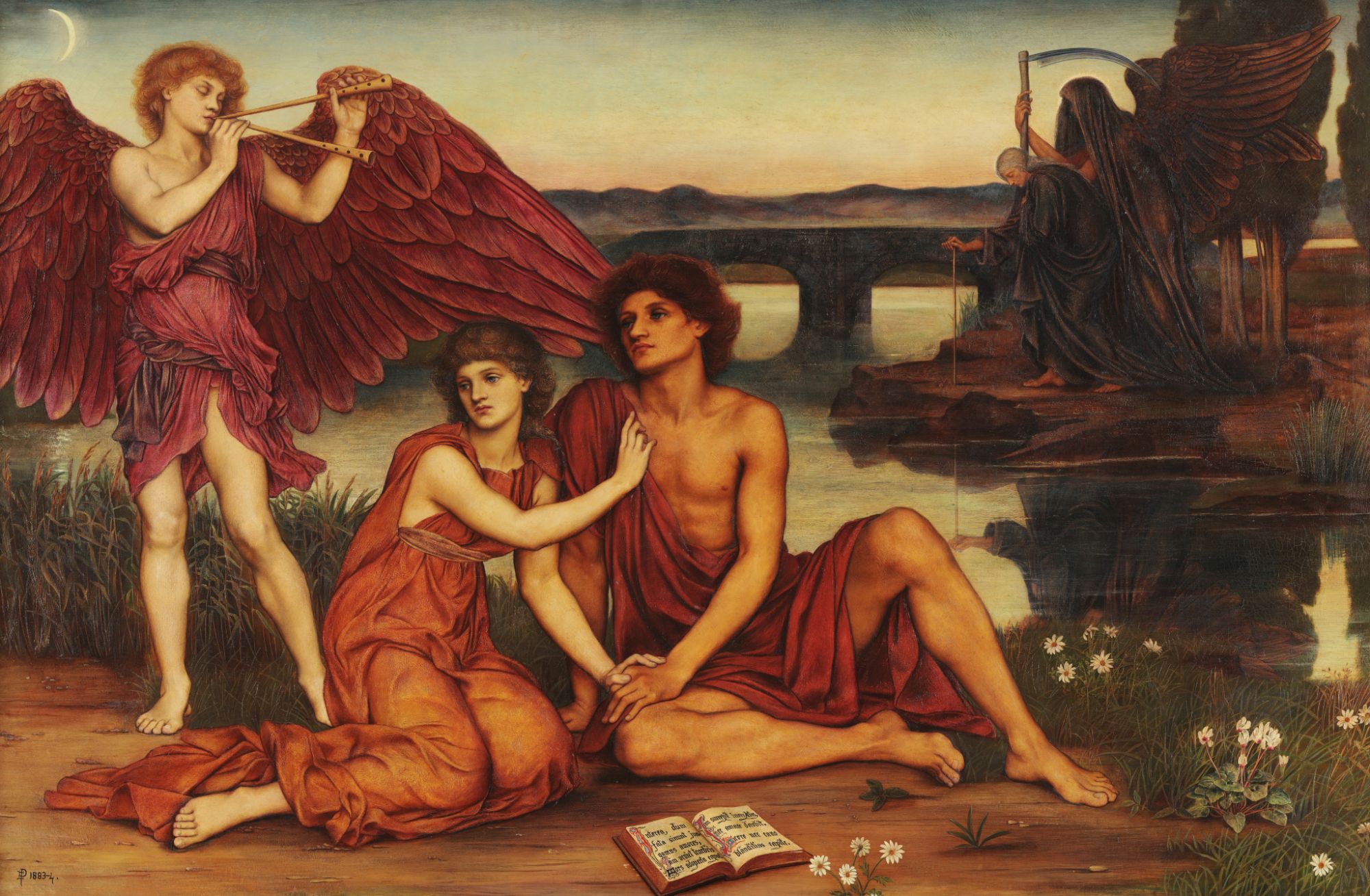Valentine’s Day Special: Evelyn and William De Morgan
On this Valentine’s Day, we are delighted to feature a current exhibition at the Delaware Art Museum, “A Marriage of Art and Crafts: Evelyn & William De Morgan.” Curated by Margaretta Frederick, Curator Emerita of the Bancroft Pre-Raphaelite Collection at the Delaware Art Museum and Sarah Hardy, Director of the De Morgan Foundation, this exhibition examines the intertwined artistic and political commitments of these two important Victorian artists. The exhibition is on view until February 19, 2023.
Important work in recent years has recovered the vibrant contributions made by women artists in the Victorian period, from the central role played by May Morris in the Arts and Crafts movement to the artists of the Pre-Raphaelite “sisterhood.” Marriage or domestic partnership was an important part of this dynamic, yet it is rarely placed at the center of these examinations.
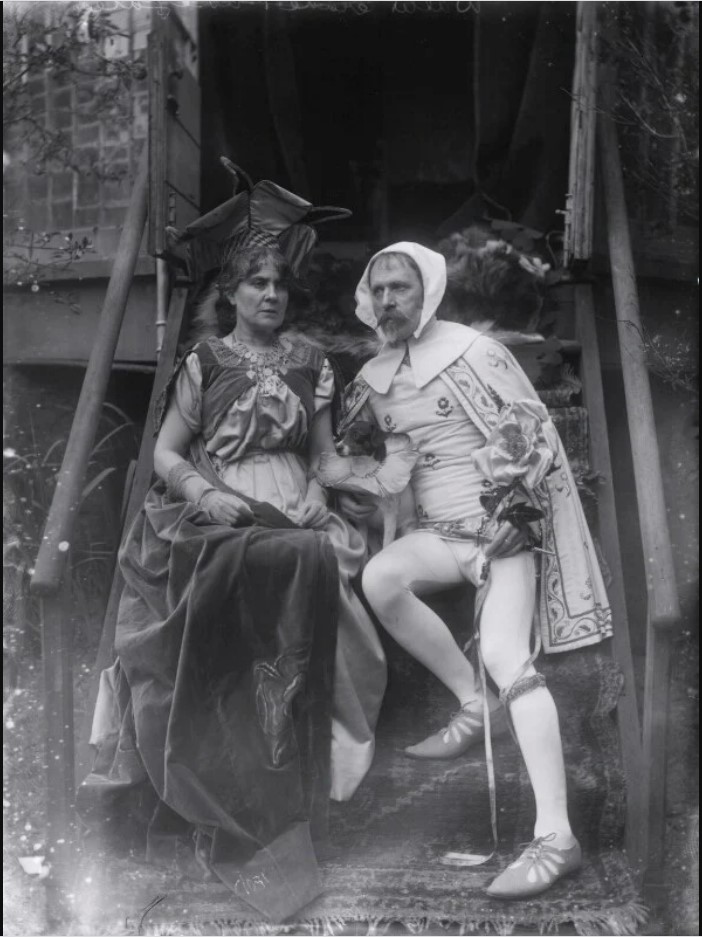
Emery Walker, photograph of Mary Frances Crane (nee Andrews) and Walter Crane, dressed for Lionel Crane’s “coming of age” party, 1901 (?), NPG, London.
The inequalities central to the Victorian understanding of marriage, not to mention the realities of class difference and gendered domestic roles, seemed to undercut the achievement of women artists. At the same time, object-oriented studies often overlook the central role played by domestic partners in artistic creation, especially under the guise of “artful living.” I have often wondered about the central (and uncredited) role played by Mary Frances Crane in the work of her husband Walter Crane. She was his model (literally–he designed all of her clothing) and muse. She was also a skilled embroider who collaborated with her husband on works, and she was also what we might call today a “thought-partner.” She was fond of staging tableaus that often inspired her husband’s children book illustrations; he would then design costumes for her based on these illustrations. On one notable occasion, a party for her son Lionel’s twenty-first birthday attended by 700 guests, she dressed as the Rose Queen, while Crane dressed as the early Italian painter Cimabue.
As a corrective to these oversights, “A Marriage of Art and Crafts: Evelyn & William De Morgan” places the artists on equal footing, looking at the ways in which a unified art and life informed their work. I was delighted to have the opportunity to ask Sarah Hardy, one of the curators of the exhibition, a few questions about the exhibitions.
Home Subjects: Do you have a favorite work or works in the exhibition?
Sarah Hardy: I’m going to be greedy and choose two! Earthbound the oil painting and Earthbound the gold drawing both by Evelyn De Morgan. When we were preparing this exhibition, something that Margaretta Frederick (co-curator of the exhibition) and myself were very keen to do was include drawings and sketches made by both artists next to the oil paintings which they were made in preparation for. We both love Earthbound by Evelyn De Morgan. It is a picture which warns against the love of material wealth which can hinder spiritual advancement.
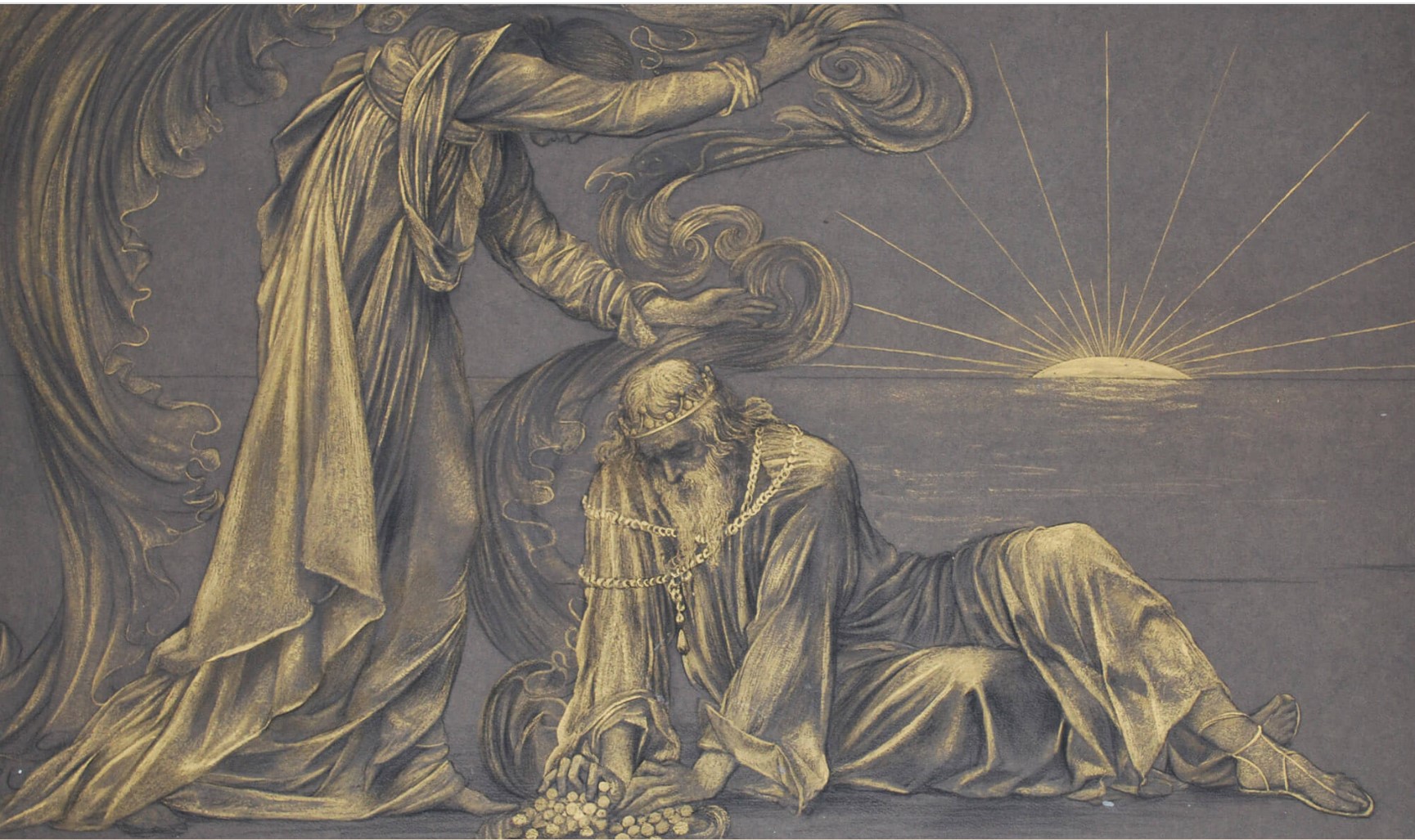
Evelyn De Morgan, Gold compositional study of male and female figures for “Earthbound,” De Morgan Foundation.
The drawing we selected to display next to this picture has the same composition but some crucial differences; the Angel has no wings and the emancipated spirit flying into the sunset is absent. The occasion of this exhibition allowed me to undertake thorough research and I was able to discover why the works have these differences. Ordinarily, we would have attributed the change between sketch and finished work to De Morgan’s creative process, but this cannot be the case with her unique gold drawings since they were made for sale and exhibition by the artist, not as a preparatory study as with her other drawings. I was delighted when I found a note in 1919 catalogue of De Morgan’s artwork which explained that William De Morgan had suggested that his wife add wings to the Angel and the flying spirit to emphasise the spiritualist message of the painting. Finding this information has forced me to rethink the De Morgans’ marriage as a creative partnership in which the artists discussed their ideas and gave each other advice. Moreover, the gold drawing demonstrates Evelyn’s appetite for experimentation and testing new materials, she had to make her own gold paint for this work as it was not readily available.
Home Subjects: What do you hope visitors will take away from the exhibition about the De Morgans, their life together, and their art?
Sarah Hardy: We have arranged the exhibition thematically so that visitors are introduced to the De Morgans as a “power couple,” then learn about their social and political concerns as they move through the artworks on display. The exhibition defines the couple variously as well-connected artists, feminists, practicing spiritualists and pacifists who opposed the First World War. Whilst this is of course crucial to understanding the artworks and the world the artists lived in, I very much hope that visitors will appreciate the beauty of the paintings and ceramics and the talent each had in creating them. The extraordinary artistic skill of the De Morgans should be the biggest takeaway from the show.
Home Subjects: Would you describe their relationship as a love-match or a meeting of the minds, or both?
Sarah Hardy: William and Evelyn held each other in high regard and each did their utmost to support the other in their professional pursuits. I think [that] was the key to their long and happy marriage. This exhibition is the first time that we have displayed the works of both together in thematic clusters to show their shared world view and it has been a really powerful way of understanding their artworks.
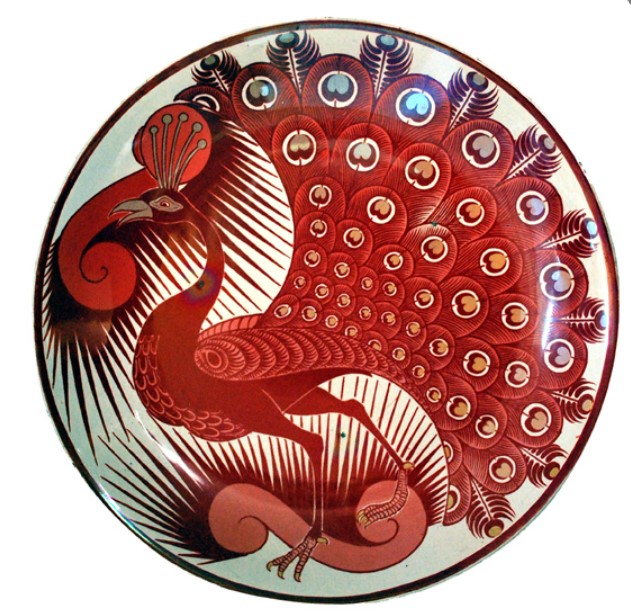
William De Morgan, Peacock lustre dish, 1872-1907, lustre-glazed earthenware, The De Morgan Foundation.
I was particularly pleased to show William De Morgan’s Peacock Lustre Plate next to The Prisoner by Evelyn De Morgan. Both used the peacock feather to represent eternal life and as a symbol of their respective association with the Aesthetic Movement in art, which values beauty over function. They were once described by Sir Edward Poynter (president of the Royal Academy) as “two of the rarest spirits of the age” which I think sums up their shared interests wonderfully.
As for them being a love match, this is something which is less well documented in books and exhibitions to date. But there is one painting in the exhibition that I think tells us all we need to know about how much the De Morgans loved each other.
“Love’s Passing” (1884) was painted by Evelyn De Morgan not very long after she had met William and is the first of her paintings which explores love as a theme. We see a young couple distracted by the music of love an Angel plays [to] them. Open at their feet is a book with a passage from one of the Greek poet Tibullus’s elergies. It describes being so in love that one imagines their grief at their partner’s death. In the background of the painting, the woman is alone, gladly accepting guidance from the Angel of death and happy to be reunited with her deceased love. William was 16 years older than Evelyn and this was obviously playing on her mind after they had met and fallen in love.
Home Subjects: Where would you direct readers who want to learn more about the De Morgans?
Sarah Hardy: The De Morgan Foundation website is a great place to start. There are essays on each artists and information about Evelyn’s sister Wilhelmina, who started the De Morgan Collection. I’d also be glad to direct people to the recent publication A Marriage of Art and Craft (Yale University Press, 2022). This is the most recent and comprehensive volume of essays ever published about the De Morgans and gives much insight into their art, lives and friendships.
